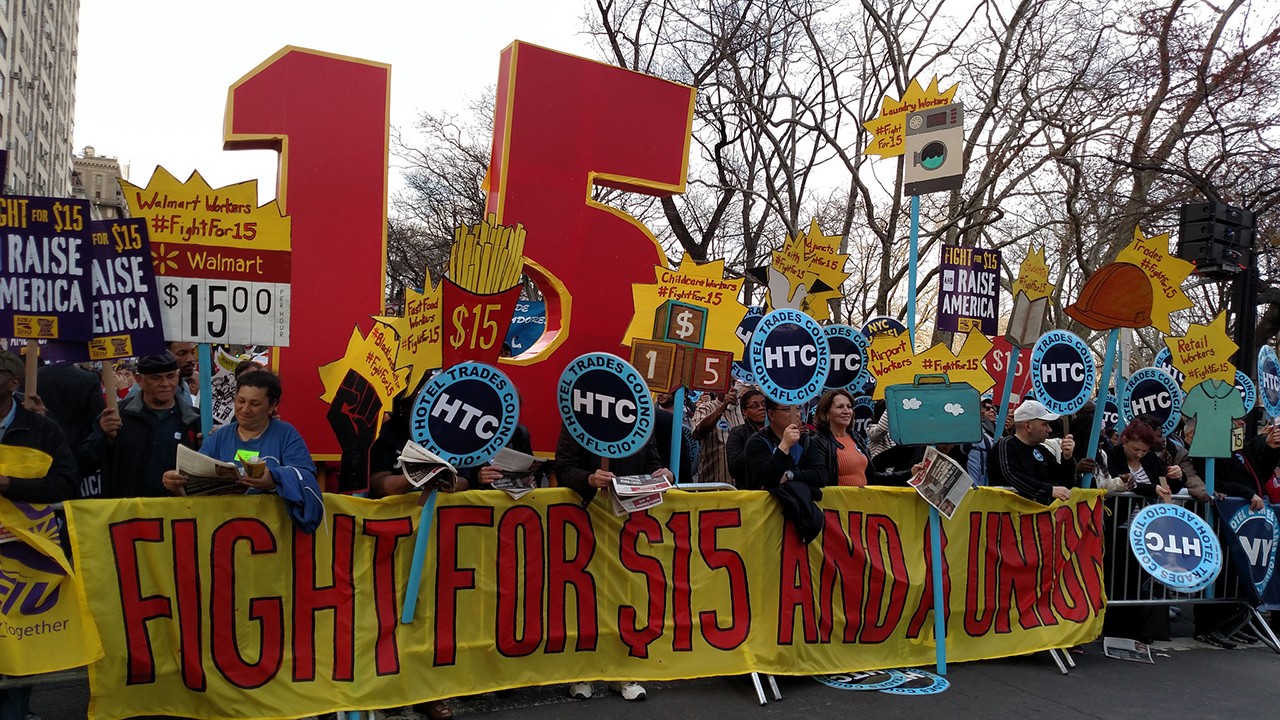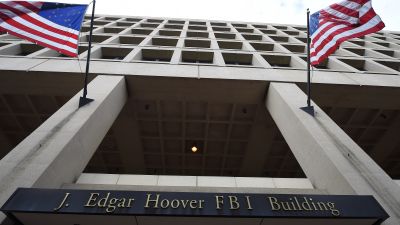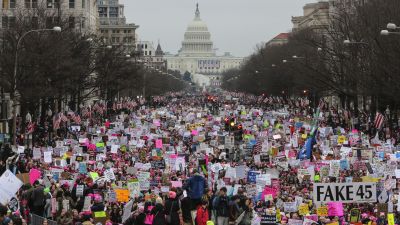
(Photo: The All-Nite Images / flickr CC 4.0)
This post originally appeared at The American Prospect.
The political earth has shifted. Last week’s tectonic jolt began in California, where the legislature voted Thursday to raise the statewide minimum wage to $15, the highest in the nation. The ripple effects of California’s huge victory for progressive forces are already being felt around the country.
The California legislation will increase the current $10 minimum wage to $10.50 next January, then $11 the following year, and increase it by $1 annually until 2022, when it will reach $15. Thereafter, it will increase each year at the same rate as the cost of living.
The federal minimum wage has been stuck at $7.25 an hour since 2009, frozen in place by the Republican opposition. In response to that gridlock, 29 states and Washington, DC, have enacted higher minimum wages than the federal level. The hike to $10.50 in January will put California ahead of all other states.
The new law will boost paychecks for millions of California workers. More than 40 percent of California workers earn less than $15 dollars an hour. By putting more money in people’s pockets, the pay increase will improve the economy by increasing consumer spending in businesses throughout the state.
The state Assembly approved the plan by a 48–26 vote, then the Senate voted for it by a 26–12 margin. No Republican voted in either chamber for the measure. Governor Jerry Brown, who endorsed the measure last week, will sign the law in Los Angeles on Monday.
After California adopted its historic law, New York Governor Andrew Cuomo announced that he had reached an agreement with the state’s legislative leaders to raise that state’s minimum wage to $15 on an even faster pace, although the threshold would vary in different parts of the state. In New York City, the wage would increase to $15 by the end of 2018. In the suburbs of Long Island and Westchester County, the wage would reach $15 by the end of 2022. The increases would take longer in upstate New York, hitting $12.50 in 2021, then increase to $15 based on a still-to-be-determined schedule.
Also last week, the largest private employer in Pennsylvania — the University of Pittsburgh Medical Center — announced it was raising its minimum wage to $15 by 2021. Columbia University said it was raising pay for student workers to $15. And New Jersey Senate President Stephen Sweeney said he will put a $15 an hour on the ballot in 2017.
“There has never been a week in US history when more workers in more places have won a common demand,” said Mary Kay Henry, president of the Service Employees International Union, the primary organizer and funder of the Fight for 15 campaign. “And there has never been a stronger case for why workers need an organization to help them improve their lives. Ten million people will be lifted out of poverty because workers joined together and acted like a union.”
How did this happen?
- In 1994, Baltimore adopted the first municipal “living wage” law, requiring companies with city subsidies and contracts to pay employers a few dollars more than the minimum wage. The idea quickly spread and, pushed by unions and community organizing groups like ACORN and the Los Angeles Alliance for a New Economy, more than 150 cities passed similar living-wage laws in the 1990s and early 2000s.
- Beginning in 2011, Occupy Wall Street changed the nation’s conversation about inequality. Now everybody in America — regardless of their political views — understands the idea of the 1 percent and the 99 percent. That language, and dichotomy, has shaped how politicians talk about the economy and has influenced how the media report on economic issues. Americans are increasingly aware of the outrageous salaries and bonuses handed to CEOs and top corporate executives while wages and living standards for the majority of workers have stagnated. Today, 42 percent of American workers earn less than $15 an hour.
- Beginning in 2012, fast-food workers, big box–chain workers, janitors and other low-wage employees mobilized in campaigns demanding that their employers provide better pay and working conditions. With allies among unions, community groups and religious organizations, these campaigns — by groups like OurWalmart and the Fight for 15 — organized strikes and rallies that shamed employers like McDonald’s and Walmart to raise wages.
- In 2014, union and community activists in the working-class Seattle suburb of Sea-Tac passed an initiative raising the minimum to $15 — a measure designed to provide economic relief to low-paid workers at the Seattle Airport. Immediately thereafter, unionists and activists in Seattle proper persuaded the new mayor and city council to adopt a $15 city-wide minimum wage — a groundbreaking victory. That triumph inspired activists in other cities to take similar actions, with Chicago, Kansas City and a host of other municipalities setting minimum-wage standards. It was in California, however, that the movement gained the most momentum. Activists in San Francisco, Los Angeles, Oakland, San Diego, San Jose, Richmond, Long Beach, Pasadena, Santa Monica, Emeryville and Berkeley, as well as Los Angeles County (the largest in the nation), won local minimum-wage laws during the past several years, most of them gradually hiking the minimum to $15, to be followed by annual cost-of-living adjustments.
- Building on those local victories, the Service Employees International Union (SEIU) and the broader California labor movement, in a bold move, threatened to put a $15 minimum-wage ballot measure before the voters this November. Polls showed that the measure commanded the support of two-thirds of California voters. That led the Democratic legislators and Governor Brown to agree to pass the legislation, allowing the unions to avoid engaging in an expensive statewide media and grassroots field campaign that could have cost them tens of millions of dollars.
- All these efforts tilted public opinion even more toward supporting higher minimum wages by telling the stories of real people trying to make ends meet on poverty-level wages.
- Bernie Sanders’s campaign lifted up the demand for a $15 federal minimum wage and gave it more visibility.
- In California, the unions and other progressive groups outmaneuvered the business community, especially the California Chamber of Commerce and the California Restaurant Association, which were caught off-guard.
- Equally important is the public’s growing hostility toward big-business lobby groups that claim that every progressive reform — consumer and environmental protections, fair taxes, workers’ rights and others — is a “job killer.” They’ve been predicting disaster about the minimum wage ever since FDR introduced the first federal minimum wage (25 cents an hour) during the Great Depression. Experience shows, however, that the business lobby groups are crying wolf. In Seattle, for example, the region’s unemployment rate hit an eight-year low of 3.6 percent in August 2015, significantly lower than the state unemployment rate of 5.3 percent, following the initial wage increase in April. In a front-page story titled, “Apocalypse Not: $15 and the Cuts that Never Came,” the Puget Sound Business Journal reported on “the minimum wage meltdown that never happened,” explaining that Seattle’s restaurant industry has continued to expand and thrive as the $15 wage phases in.
Fight for 15 campaigns are gaining momentum in Illinois, Massachusetts, Michigan, Rhode Island, Vermont, Oregon, New Jersey and Washington. As more cities and states raise their minimum wages, pressure will mount on the next president and Congress to raise the federal wage threshold.
During the past few years, throughout California and across the country, ordinary people invested their time and talent toward the goal of lifting working families out of poverty. They made lots of phone calls, planned meetings, organized marches and rallies, knocked on doors, elected progressives to office, kept the heat up and spread the word about the fight for $15. These are the things that movements do when they are at their best.




